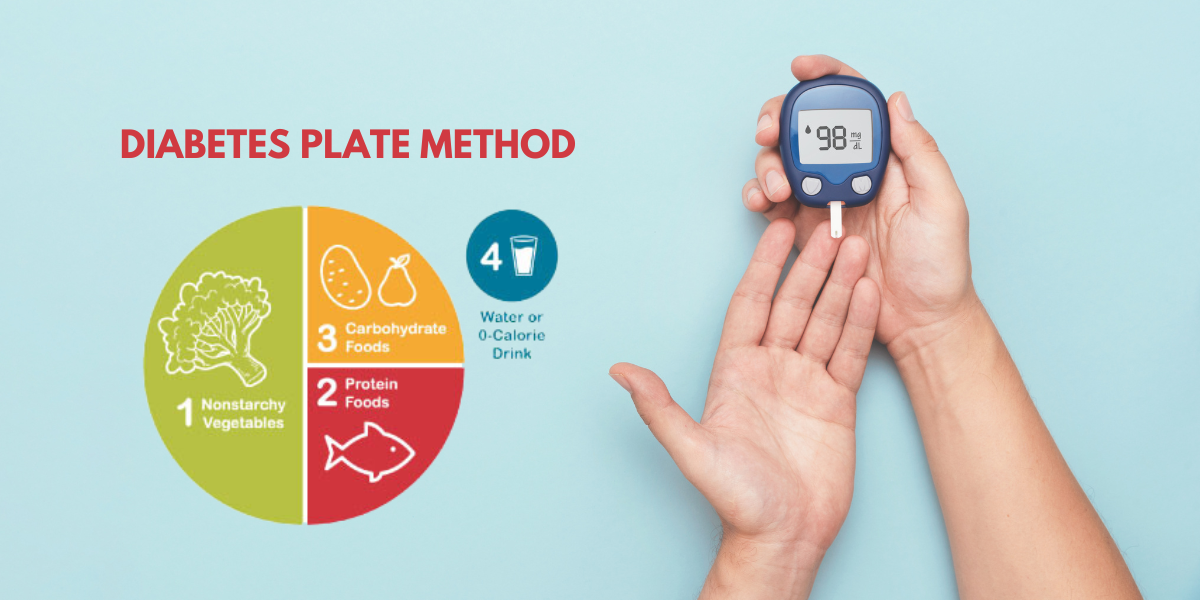Indian doctors endorse the 'Diabetes Plate Method' recommended by the American Diabetes Association for diabetes management and weight loss.

Diabetes Plate Method suggested by American Diabetes Association. (American Diabetes Association/Proxima Studio)
Looking to shed some weight? Manage diabetes? The first question often asked is: What do I eat?
Answering this question, Stacey Krawczyk, Director of Nutrition and Wellness at the American Diabetes Association, recently took to X to introduce an intriguing, decade-old method called “The Diabetes Plate Method“.
South First spoke to renowned diabetologist Dr V Mohan, who agrees that this is the best way for diabetics to manage their diabetes. He also asserts that the method serves as a potent tool for weight loss. Dr Mohan has been prescribing this approach to patients in his clinic in India.
Dr V Mohan is the Chairman of Dr Mohan’s Diabetes Specialities Centre in Chennai, which is an IDF Centre of Excellence in Diabetes Care, as well as Chairman of the Madras Diabetic Research Foundation, an ICMR Centre for Advanced Research on Diabetes.
In a video, Stacey elaborates on how this method facilitates the effortless construction of well-balanced meals, balanced with the perfect mix of vegetables, proteins, and carbohydrates. No need for meticulous counting, calculating, weighing or measuring — “you just need a plate”, she says!
Curious about meal planning with diabetes or prediabetes? Listen as Stacey, the ADA’s Director of Nutrition & Wellness, reveals the secret to starting simple: the Diabetes Plate Method. Learn more this #NationalNutritionMonth at https://t.co/wg546WeOkX. 🍽️🥦🍎 @eatright pic.twitter.com/gQ0QmxfZXq
— American Diabetes Association (@AmDiabetesAssn) March 17, 2024
Stacey explains that the Diabetes Plate Method is a decade-old, tried-and-tested format embraced by healthcare professionals across many countries. This method is hailed as a low-carbohydrate meal plan, recommended in line with the guidance from the 2019 “Nutrition Therapy for Adults with Diabetes or Pre-Diabetes: A Consensus Report“.
The doctor advises that on a 9-inch plate, half the plate should be devoted to non-starchy vegetables, one quarter to lean protein, one quarter to high-quality carbohydrates, and a non-caloric beverage for hydration. High-quality carbohydrates encompass whole grains, starchy vegetables, legumes, and fruits.
“Nine-inch plates are usually the smaller lunch or salad plates in your dinnerware set. Fill half the plate with non-starchy vegetables like leafy greens, green beans, broccoli. And then one quarter of the plate from lean protein and the remaining quarter section with a quality carbohydrate of your choice, such as starchy vegetables, rice, pasta, bread…” Stacey suggests, in the video.
She emphasises, “Once you get familiar with the amounts, it’s easier to incorporate combination foods. But when in doubt, eat more non-starchy veggies.”
Speaking to South First, Dr V Mohan asserts that the “Diabetes Plate Method” isn’t just for diabetics but for anyone aiming to shed weight or improve overall health. He suggests filling the plate half with leafy non-starchy vegetables, a quarter with lean proteins, and a quarter with carbohydrates.
For protein, Dr Mohan recommends that one can opt for plant sources like lentils, pulses, or paneer, and for non-vegetarians, fish, chicken, egg whites are viable choices, while red meat should be avoided.
“The carbohydrate portion can be individualised to different regions of the country. Rice may suit the South and East, while chapatis are popular in the North and West. However, this portion should always occupy just a quarter of the plate,” Dr Mohan explains.
He asserts that this method aids in diabetes management, maintaining diabetic health, combating obesity, and can be adapted to regional preferences. For instance, different parts of the country yield distinct vegetable varieties, allowing for customisation, but always emphasising non-starchy, leafy greens.
In addition to the plate, Dr Mohan suggests including a cup of yoghurt, water, and a low-glycemic index fruit like apples, pears, oranges, berries, grapes, etc.
He further stresses that this concept is gaining popularity globally and nationwide, and must be tailored to Indian tastes and regional differences, incorporating local foods accordingly.
Meanwhile, renowned metabolic health coach Shashikant Iyengar, who is a staunch advocate for a low-carb diet, commends the Diabetes Plate Method’s efficacy. However, he believes that for the Indian lifestyle and dietary habits, further reduction in carbohydrates on the plate would be advantageous.
He explains that while the recommended plate’s emphasis on non-starchy vegetables and protein-rich foods is commendable, the carbohydrate portion, including whole grains, starchy root vegetables, and fruits, could be further limited.
“One must be mindful while consuming starchy root vegetables and whole grains, as these can elevate blood sugar levels,” Iyengar advises. He notes that traditional Indian diets often consist of up to 75 per cent grains with minimal protein, contrasting with this method’s principles.
While adopting the Diabetes Plate Method would undoubtedly improve blood sugar management, Iyengar advocates for a more significant reduction in carbohydrate intake for enhanced control, underscoring the potential for substantial health benefits.
(Edited by Kamna Revanoor)

Apr 27, 2024

Apr 27, 2024

Apr 26, 2024

Apr 26, 2024

Apr 25, 2024

Apr 24, 2024